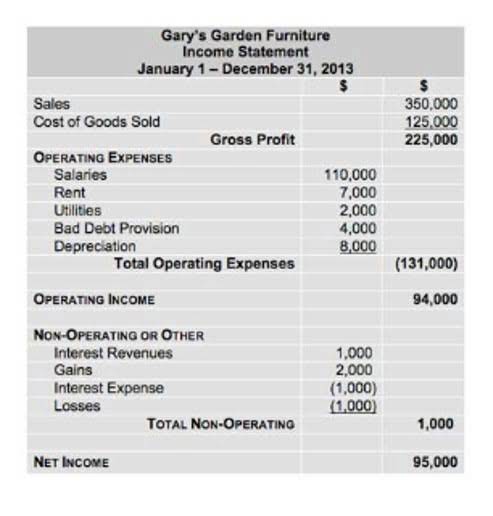
It is in the business of manufacturing customized roller skates for both professional and amateur skaters. As per the balance sheet of ABC Limited for the financial year ended on March 31, 20XX, the total assets are $750,000, and the total liabilities are $450,000. Company or shareholders’ equity often provides analysts and investors with a general idea of the company’s financial health and well-being. A company’s equity is the difference between its total assets and total liabilities.

Step 2: Calculate total liabilities
It represents the total value of a company’s shares — and it’s essential for valuations, mergers, acquisitions, and IPO planning. This will boost the total capital invested and improve the company’s financial strength for its shareholders. Shareholders’ equity alone doesn’t determine investment decisions, but a negative SE can mean higher risks for the company. Using shareholders’ equity how to calculate total stockholders equity along with other financial measures helps make a well-informed decision. The book value of equity is essentially the same as SE, representing the net worth of the company attributable to the company’s shareholders after deducting liabilities from assets. Long-term liabilities, also known as non-current liabilities, are financial obligations that are due beyond one year or the normal operating cycle of the company.
Low Shareholder’s Equity: What Does It Mean?
Short-term debts generally fall into the current liabilities category, as these are things that a company is most likely to https://www.bookstime.com/articles/net-income pay in the near future. Since repurchased shares can no longer trade in the markets, treasury stock must be deducted from shareholders’ equity. For mature companies consistently profitable, the retained earnings line item can contribute the highest percentage of shareholders’ equity. In these types of scenarios, the management team’s decision to add more to its cash reserves causes its cash balance to accumulate. If we rearrange the balance sheet equation, we’re left with the shareholders’ equity formula. The shareholder equity ratio is most meaningful in comparison with the company’s peers or competitors in the same sector.
What Are the Components of Shareholder Equity?
To find stockholders’ equity, you simply subtract the company’s total liabilities from its total assets. Stockholders’ equity, also known as shareholders’ equity, represents the ownership interest of the shareholders in the corporation. It is one of the three main components of a corporation’s balance sheet, the other two being assets and liabilities. The double-entry practice ensures that the accounting equation always remains balanced. The left-side value of the equation will always match the right-side value.
- Understanding stockholders’ equity and how it’s calculated can help you to make more informed decisions as an investor.
- This equation is the basis for the balance sheet, which summarizes a company’s financial position at a specific point in time.
- Stockholders Equity provides highly useful information when analyzing financial statements.
- If a balance sheet is not available, another option is to summarize the total amount of all assets and subtract the total amount of all liabilities.
- It is obtained by taking the net income of the business divided by the shareholders’ equity.
- The amount of equity one has in their residence represents how much of the home they own after accounting for the mortgage debt owed.
- It’s possible for retained earnings to represent the largest share of owner equity if growth substantially outpaces the amount of capital paid in.
- By definition, a company’s assets minus its liabilities equals its stockholders’ equity (also known as “net equity”).
- Shareholders’ equity is the residual claims on the company’s assets belonging to the company’s owners once all liabilities have been paid down.
- Instead, one could easily misinterpret an increasing ROE, as the company produces more profits using less equity capital, without seeing the full picture (i.e. reliance on debt).
- There is a clear distinction between the book value of equity recorded on the balance sheet and the market value of equity according to the publicly traded stock market.
If the number for stockholders’ equity is negative, it may warn of impending bankruptcy (particularly if it is due to a high debt load). Stockholders’ equity is the value of a company’s assets left for shareholders after the company pays all of its liabilities. This tells you that ABC Widgets has financed 75% of its assets with shareholder equity, meaning that only 25% is funded by debt. This will give you cash and stop them from losing more value, which will increase the value of your company for shareholders. Start increasing your earnings by using better equipment and finding ways to work more efficiently.
- The guidelines for what constitutes a “good” proprietary ratio are industry-specific and are also affected by the company’s fundamentals.
- The total liabilities referenced in the above formula represent all of a company’s current and long-term liabilities.
- Stockholders’ equity is typically included on a company’s balance sheet but it’s possible to calculate it yourself.
- The market may demand a higher cost of equity, putting pressure on the firm’s valuation.
When liquidation occurs, there’s a pecking order that applies which dictates who gets paid out first. Calculating stockholders’ equity can give investors a better idea of what assets might be left (and paid out to shareholders) once all outstanding liabilities or debts are satisfied. From the point of view of an investor, it is essential to understand the stockholder’s equity formula because it represents the real value of the stockholder’s investment in the business. The stockholder’s equity is available as a line item in the balance sheet of a company or a firm.

In the stock market, shareholders’ equity (or owners’ equity for privately held companies) represents the difference between a company’s assets and liabilities. If all of the company’s assets were liquidated and used to pay off debts, the shareholders’ equity is the amount that would be left over. In the case of an acquisition, it is the value of company sales minus any liabilities owed by the company that are not transferred with the sale. Total equity represents the cornerstone of a company’s financial standing, reflecting the owners’ residual interest in its assets after deducting liabilities. In simpler terms, it is what remains for the shareholders after all debts and liabilities are accounted for.


Meanwhile, the preferred dividends, which receive debt-like treatments, should be deducted from net income. Average shareholders’ equity is an averaging concept used to smooth out the retained earnings balance sheet results of the return on equity calculation. The concept is most useful when measuring the return on investment in a period in which a business has sold a large amount of stock.
